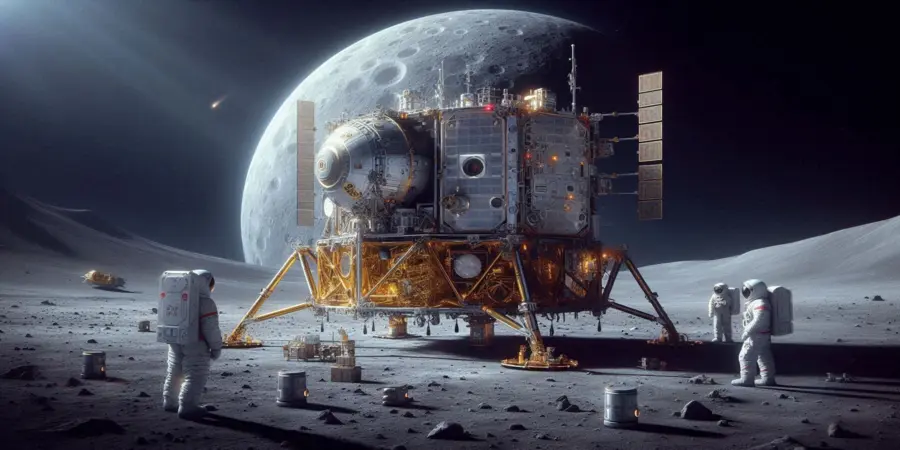In a bold stride towards solidifying its position as a major player in space exploration, China is set to launch the Chang’e-6 mission, aiming to collect and return lunar samples to Earth. This ambitious mission marks a significant follow-up to the successful Chang’e-5, which in 2020 made China the third country ever to bring back lunar samples, after the United States and the Soviet Union.
Mission Overview
The Chang’e-6 mission, named after the Chinese moon goddess, is scheduled for launch in 2024. The mission will target the far side of the Moon, a region that remains largely unexplored due to its challenging communication and operational conditions. The far side, which always faces away from Earth, holds scientific mysteries that could provide crucial insights into the Moon’s history and evolution.
Objectives and Innovations
The primary objective of Chang’e-6 is to collect and return lunar samples, focusing on areas that have not been sampled in previous missions. The mission will deploy a lander and an ascent vehicle, with the lander designed to drill and scoop lunar material. The samples will then be transferred to the ascent vehicle, which will rendezvous with the orbiter to deliver the precious cargo back to Earth.
This mission will also involve international collaboration, with payloads from France, Sweden, Italy, and Russia. These contributions include scientific instruments aimed at enhancing the research scope of the mission, demonstrating China’s willingness to cooperate globally in its space endeavours.
Technological Advancements
Chang’e-6 will feature several technological advancements over its predecessors. Enhanced precision landing capabilities, more robust sample collection mechanisms, and improved ascent and docking technologies are among the key innovations. These improvements are crucial for ensuring the mission’s success, particularly given the challenging environment of the far side of the Moon.
Significance and Future Prospects
The successful execution of Chang’e-6 would not only represent a monumental achievement for China’s space program but also contribute significantly to lunar science. The samples collected could offer unprecedented insights into the Moon’s geological history, including information about its composition, structure, and the effects of solar wind and cosmic radiation.
Moreover, the mission lays the groundwork for future lunar exploration. China has ambitious plans, including the establishment of a lunar research station in the 2030s. The data and experience gained from Chang’e-6 will be invaluable for these long-term goals, potentially paving the way for sustained human presence on the Moon.
Global Implications
China’s rapid advancements in space exploration are reshaping the global space landscape. The Chang’e-6 mission underscores China’s growing capabilities and ambitions, positioning the country as a formidable force in the new space race. This mission, alongside other international efforts, highlights a new era of lunar exploration, marked by increased cooperation and competition.
As the world watches, Chang’e-6 promises to be a milestone in humanity’s quest to understand and explore our nearest celestial neighbour. The mission’s success could herald a new chapter in lunar exploration, fostering a deeper understanding of the Moon and inspiring future generations of scientists and explorers.









